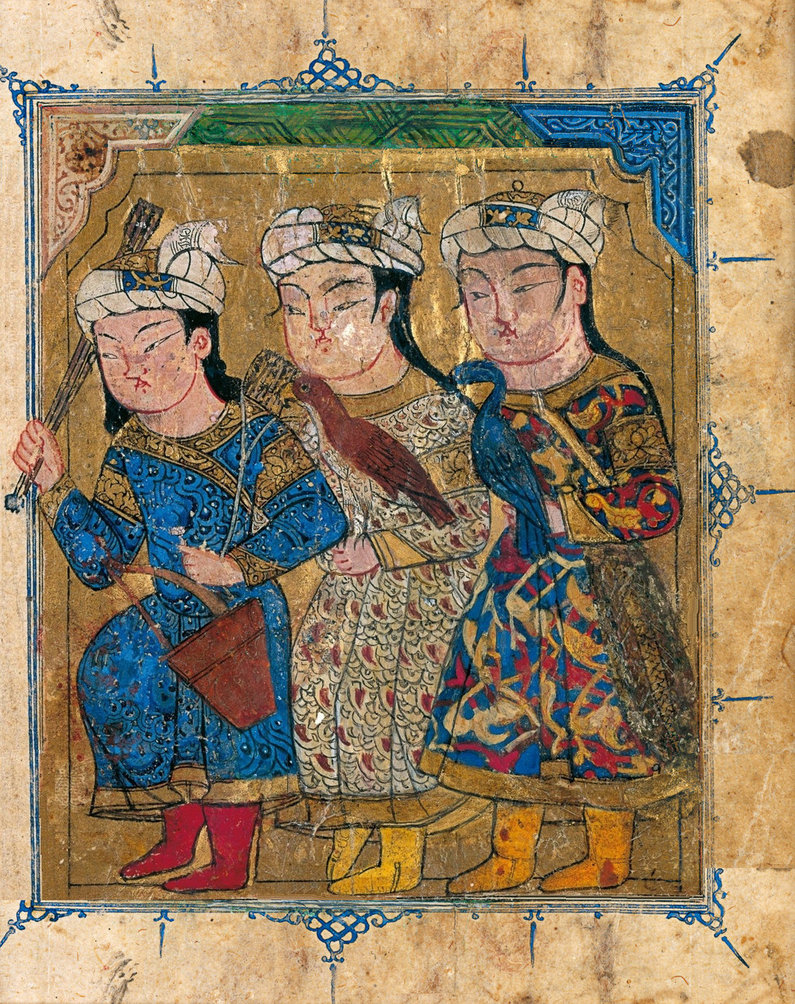Frontispiece From A Manuscript Of The
Sulwan Al-Muta' Of Ibn Zafar
Three Young Hunters
Three young hunters
Frontispiece from the Sulwan al-mutaʿ
Mamluk Egypt circa 1325-50 AD
Ink, opaque watercolour, and gold on paper
Dimensions of Image: 13.7 x 11.2 cm
Three young men dressed in sumptuous garments embellished with gold tirāz bands on their arms and turbans are ready for a hunt.
One has a bow in a brown case and arrows (left); the central figure carries a brown and white hawk;
and the figure on the right holds a blue long-necked bird.
This painting is the right side of a double frontispiece from a manuscript of the Sulwān al-mutāʿ fi ʿudwān al-atbāʿ
("Comfort of Rulers when Faced with the Hostility of their Followers").
The work uses Qur'anic verses, sayings and traditions of the Prophet (hadīth),
animal fables, and princely characters from ancient Persian history to advise princes on conduct and the preservation of power and leadership.
Such accounts were often referred to as “mirror of princes.”
A. S. Melikian-Chirvani's facsimile publication and discussion of the manuscript demonstrates its value as a sharp commentary on "injustice,
social exploitation and political oppression", as well as the manuscript's importance for the history of Arab painting (Melikian-Chirvani 1985).
The text was composed in 1159 by Ibn Zafar al-Siqilli ("the Sicilian," d. 1170), an Arab philosopher and
prolific author who travelled extensively and was probably born in Norman-ruled Sicily in 1104 CE.
The frontispiece belongs to a copy of the manuscript which is in the Freer Gallery of Art, Washington, D.C.
The Aga Khan Museum. Accession number AKM00012
Back to the smaller image of Three young hunters, Sulwan Al-Muta' of Ibn Zafar, c.1325-50 AD. The Aga Khan Museum AKM00012.

